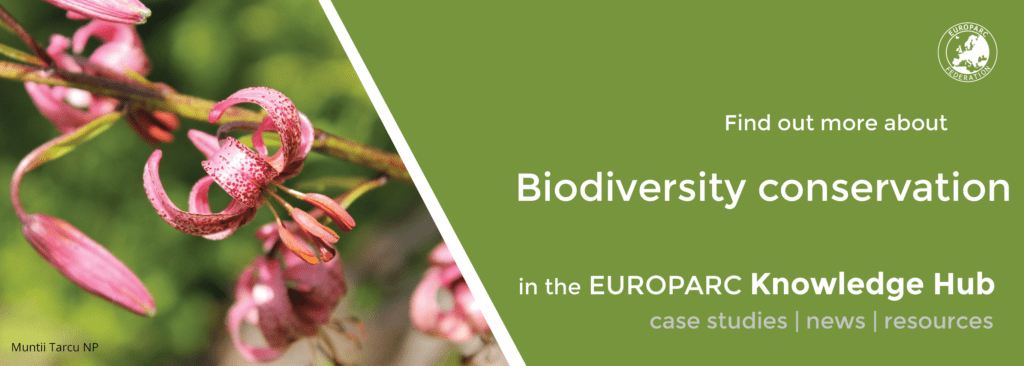Restoring peatlands: the most efficient terrestrial carbon-sink in the world
Picture from Pixabay
The Moors for the Future Partnership is working to restore degraded peatlands since 2003 in the Peak District National Park and South Pennines. Natural England gave a boost of nearly £2 million to the partnership with the attribution of the Water Environment Grant (WEG), for the implementation of the project “Building Blocks – Next steps in Gully Blocking”.
Peatlands. An amazing landscape providing numerous ecosystem services
Peatlands are the largest natural terrestrial carbon store, and damaged peatlands are a major source of greenhouse gas emissions. Thanks to the unique characteristics of these ecosystems, formed from plant matter partially decomposed and accumulated through thousands of years, when healthy they serve as:
- Habitats: Due to the low level of nutrients available, they are the habitat for rare and well-adapted species, including many endangered birds.
- Wildfire safeguards: By keeping itself wet holding a great amount of water.
- Climate-change natural fighters: They are the most effective terrestrial carbon-sink, they absorb and store carbon from the atmosphere
- Water filters: fundamentally because of the sphagnum moss, the water is filtered and cleaned.
- Preventers from flooding: They absorb and decrease the speed of the water, avoiding soil erosion at the same time.
- Beautiful and calming places: For the people to enjoy, relax and practice many activities.
However, when damaged, their services decrease: they release the stored carbon and other heavy metals and increase the risk of wild fires. Thus their restoration is of utmost importance… and peatlands are an essential weapon in the battle against climate change, alongside other campaigns such as the replanting of trees. The key is to stabilise the bare peat by maintaining the vegetal blanket that covers it.
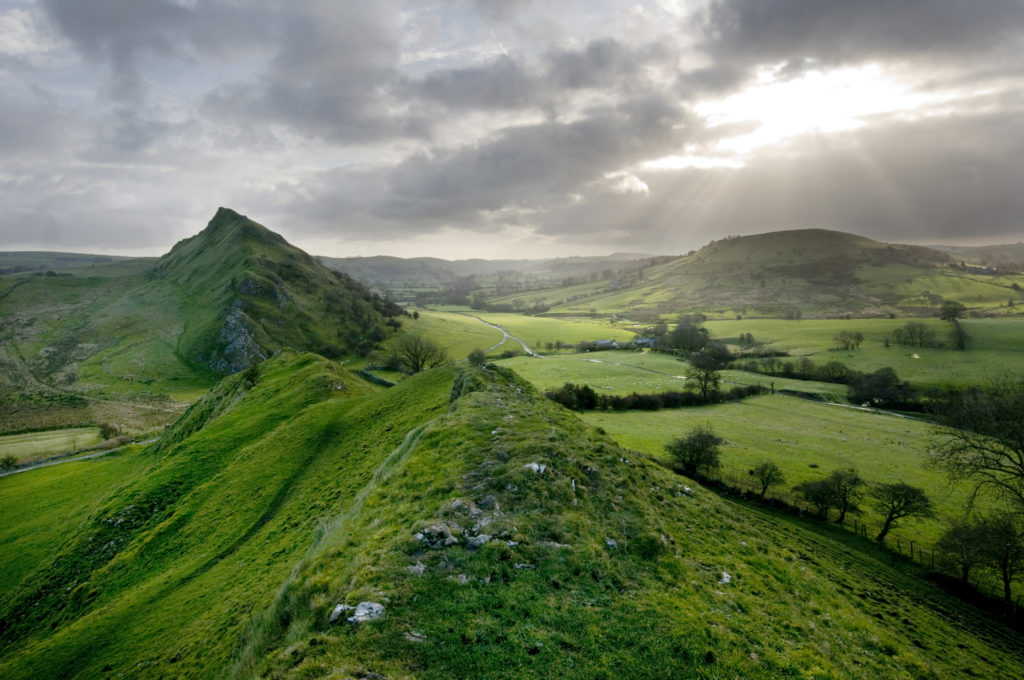
Peak District National Park
Protecting the most degraded landscape in Europe
In the South Pennine Moors, 200 years of historic air pollution from the industrial revolution and wild fires have led to this area being degraded on a massive scale. The vegetation on the moors has been stripped away, exposing bare peat, which is easily eroded, releasing carbon back into the atmosphere, increasing the risk of wildfire, and making floods more likely downstream.
Bare peat is also washed downstream into reservoirs, which, as it contains heavy metals deposited by centuries of pollution, is costly for water companies to clean.
The Moors for the Future Partnership
Since 2003, projects undertaken by Moors for the Future Partnership have used innovative conservation techniques to restore the degraded peatland:
they have already transformed 32 sq kilometers of black degraded peat, installed over 30,500 mini-dams, to slow water run-off, and form natural flood management, and planted sphagnum moss and other natural moorland plants to stabilise the bare peat.
Recently, the Partnership has secured a project funded through the Water Environment Grant (WEG) by Natural England, of nearly £2 million. The project “Building Blocks – Next steps in Gully Blocking” is focused on improving the biodiversity and reduce the water coloration of the South Pennine Moors by keeping the hydrological integrity of the blanket-bog.
The Building Blocks project will enable the Partnership to map a further 100,000 gullies that need their attention, allowing them to create a list of areas to prioritise in the coming years, and further enhance a collaborative partnership working well, both within designated and non-designated landscapes, ensuring resources are secured for the most sensitive landscapes.
The measures:
-Installation of 7.800 gully blocks to slow water run-off and form natural flood management.
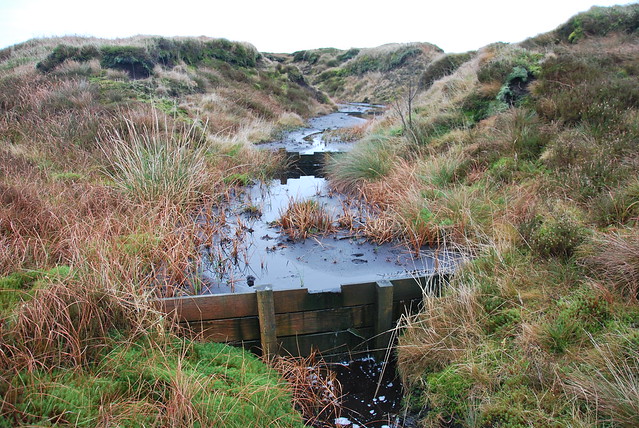
Dam slowing the sediment – Peak District National Park
–Plantation of 400 ha of sphagnum moss to allow the colonization of vegetation
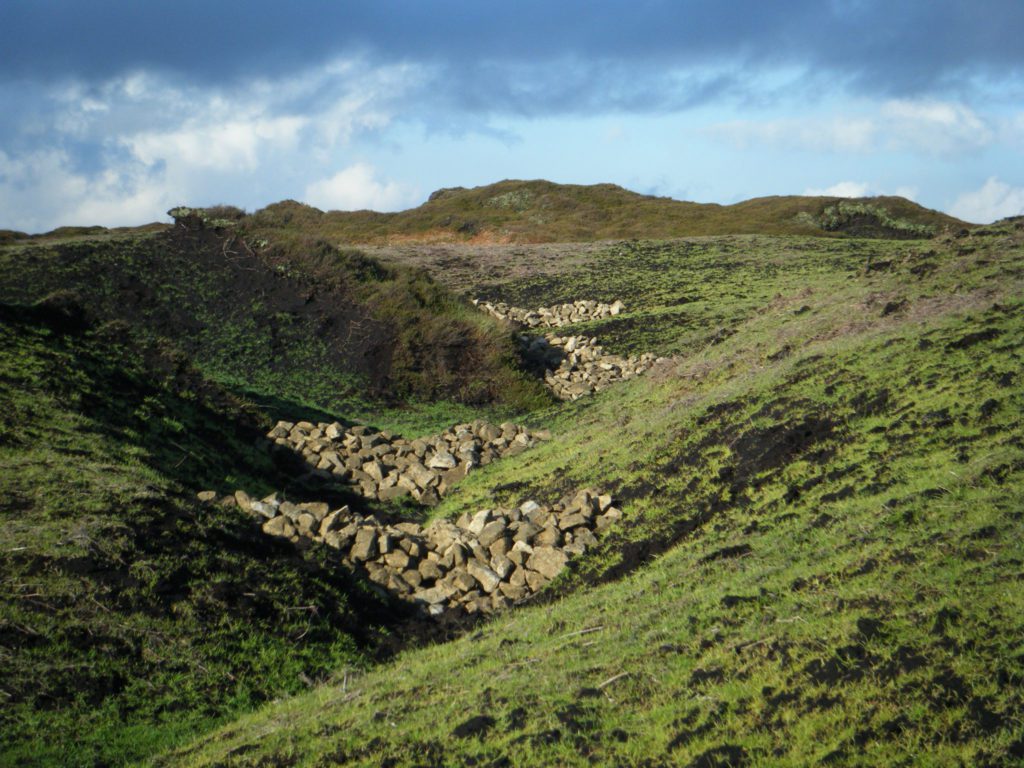
Stone Gully Blocks – Peak District National Park
–Creation a list of areas to prioritise by mapping 100.000 gullies for future work.
Climate change has created many new challenges, not least flooding. The Building Blocks project from Moors for the Future Partnership is exactly the sort of forward-looking, Natural Flood Management initiative needed to create a nation ready for, and resilient to, flooding. It also helps to store carbon on the moors, providing long-term protection against climate change itself, and improves water quality,
said Louise Cresswell, Area Director for the Environment Agency. The 24-month project will allow the Partnership to improve biodiversity, and reduce water colouration. It is in line with the Environment Agency’s Draft National Flood and Coastal Erosion Risk Management Strategy for England and its part-funded by the European Agricultural Fund for Rural Development.
The work of the partnership is delivered by the Moors for the Future staff team through the Peak District National Park Authority, and supported through its partners including the Environment Agency, National Trust, RSPB, Severn Trent, United Utilities, Yorkshire Water, Pennine Prospects and representatives of the moorland owner and farming community.
Check the official Website of Moors For the future to learn more about this project!
European Parks Academy 2019: a special participation of EUROPARC
E.C.O. Institute of Ecology Facebook Page
Hosted by the ECO Institute for Ecology, the European Parks Academy is a prestigious “summer school” focused on Protected area management, and takes place annually in July, at the Lakeside Campus in Klagenfurt. EUROPARC has a long-established collaboration with ECO, especially with the MSC programme Management in Conservation Areas. In this edition of the European Parks Academy, Stefania Petrosillo and Carol Ritchie were invited as guest lecturers. This is their story!
EUROPARC at the European Parks Academy 2019
A relaxed, intensive opportunity for Protected Area staff to gain new insights ideas and inspiration!
As much as EUROPARC is investing in new technology and e-learning for capacity building of our members, there remains an important and vital need for face to face, participatory learning and the European Parks Academy provides that space. Three seminars are offered in the 5-day intensive week. This year focused on World Heritage Sites & Sustainable Tourism, Ecological Monitoring & Innovative Technologies and Transboundary Protected Areas.
Stefania Petrosillo and Carol Ritchie from EUROPARC Directorate gave full-day workshops into Transboundary and Sustainable Tourism seminar, complimenting the inputs from Boris Erg from IUCN Regional Office for Eastern Europe and Central Asia and Peter Debrine from UNESCO earlier in the week.
Workshops
In the Transboundary Workshop Stefania presented the EUROPARC Transboundary Program “Following Natures Design”, effectively supported by Marko Pretner, from the Julian Alps Transboundary Ecoregion (IT/SI) with his direct involvement in cooperation between Prealpi Giulie Nature Park and Triglav National Park. Discussions, working groups and also games, allowed the participants to share their questions and experiences about concrete advantages and challenges on collaboration between parks in neighboring countries.
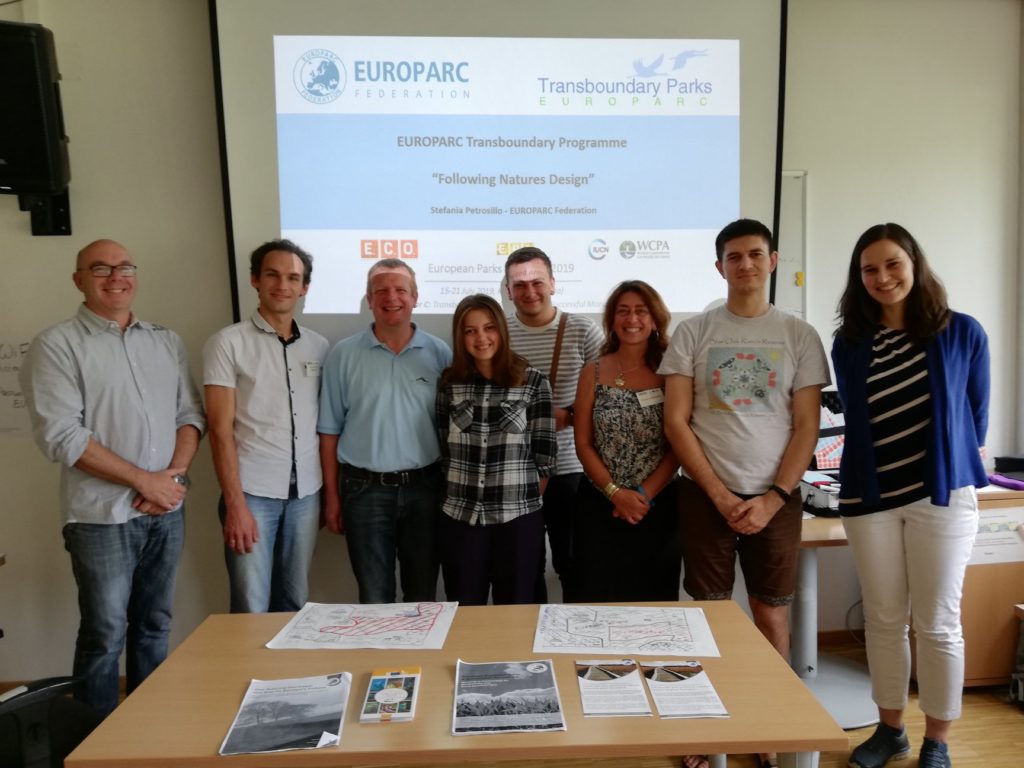
Transboundary seminar – E.C.O. Institute of Ecology. Facebook Page.
Meanwhile, next door, Carol, in the sweltering heat of an Austrian summer, discussed the need for sustainable tourism in protected areas and took participants through the European Charter for Sustainable Tourism in Protected Areas showcasing the great work done by our parks and partners in EUROPARC Sustainable Destinations across Europe.
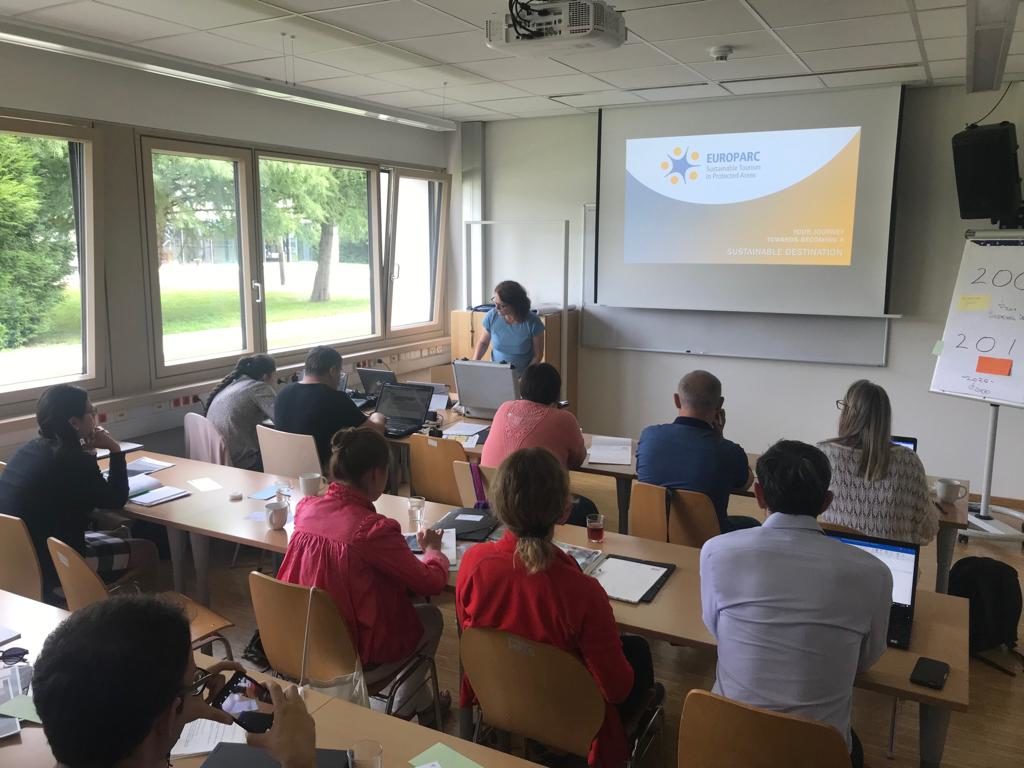
E.C.O. Institute of Ecology Facebook Page
In both workshops EUROPARC took the opportunity also to present the Natura 2000 Award as well as highlight the work of CEETO, Sustainable Tourism training for tomorrow and Life e-Natura2000.edu projects.
Stefania Petrosillo also attended the final study tour to the Austrian GeoPark of Carnic Alps and got the chance to learn about the crossborder history and current projects with a visit to the border of Austria, Slovenia and Italy.
Participants came from Ukraine, Israel, Germany, Austria and were all working in agencies or Protected Areas. It was a delight to get to know them and the circumstances within which they work. Hopefully, we will see some soon joining our EUROPARC network soon!
We were extremely impressed by the quality of the European Parks Academy and the professionalism of ECO in organising it. EUROPARC cannot recommend it highly enough for all members wishing to have an intensive “top up” of their professional learning.
Look out for next year’s academy and seminar topics!
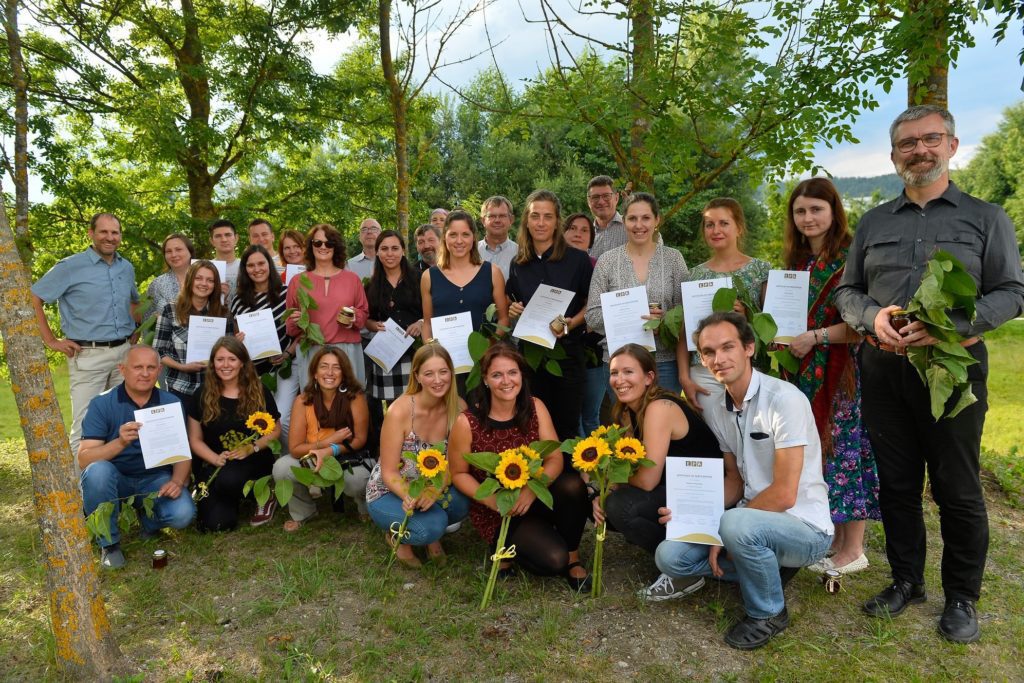
E.C.O. Institute of Ecology Facebook Page
A special visit… to EUROPARC Library!
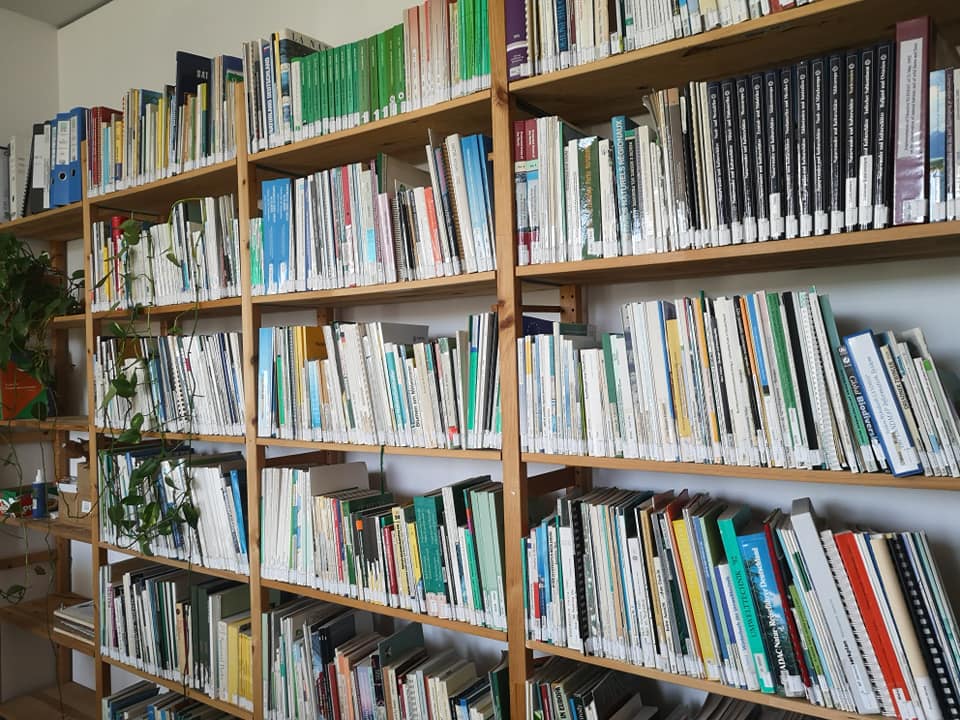
E.C.O. Institute of Ecology – EUROPARC Library
Whilst in attendance to the study tour, Carol took the opportunity to pop into the EUROPARC library, held on our behalf by ECO. It is a collection of over 40-year archive of the work and practice of protected area management and available to anyone in research or study to utilise. Pay them a visit!
In addition, it was useful to re-establish EUROPARC’s commitment to the MSC course in Management of Conservation Areas. Newly adapted and relaunched with the Carpathian University of Applied Sciences. EUROPARC will be represented on the board of the course and will endeavour to ensure new entries into the protected area management world have a thorough understanding of the practicalities and realities of our work.
Registration for of the European Parks Academy 2020 will open in September, check out ECO website for details!
Save the Date: Seminar-Dialogue 2019
EUROPARC and DG Environment Seminar-Dialogue
Every year, EUROPARC invites members to showcase their achievements in the European Commission in the Seminar-Dialogue, an event jointly organised with DG Environment.
By bringing together our members and representatives of several DGs, we will analyse existing European policies and showcase the challenges and successes of their implementation in the field, by protected areas and Natura 2000 sites.
The past 2 editions proved to be a great success, with interesting debates around many topics relevant for Protected Areas. This year, we will be looking at Nature, Rural Development and Tourism together with DG AGRI and DG GROWTH.
If your park/organisation is interested in joining us, please send an email to s.petrosillo @ europarc.org.
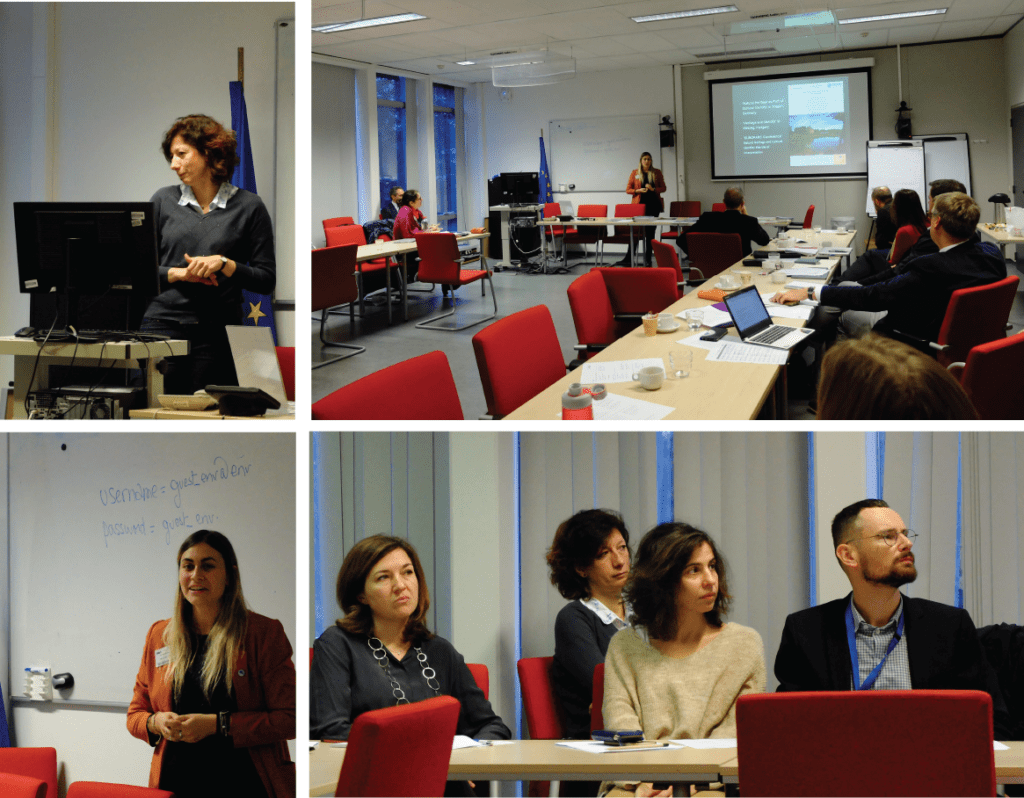
Seminar- Dialogue on European policies, co-organised with the DG ENV. The Seminar Dialogue aims to bridge the policy and legislative work in Brussels with experience in the field from EUROPARC members.
We look forward to see you in Brussels, between the 28-29th October 2019. More information and registrations will open soon.
We stand with the World’s Rangers – World Ranger Day 2019
Join the celebration of the World Ranger Day 2019, an action promoted by the International Ranger Federation and Thin Green Line foundation.
Stand with the Rangers!
Rangers are the first line in Protected Areas devoted to safeguarding our Parks and the landscapes and wildlife they hold. This day is a celebration of their work as committed and brave guards of the natural heritage and to commemorate and honour the memory of those who unfortunately each year, due to the threats they face, are no longer with us.
Today is a day to be thankful for their bravery and courage and for remember the sacrifice of the Rangers that died on service.
We don’t forget you. We stand with you.
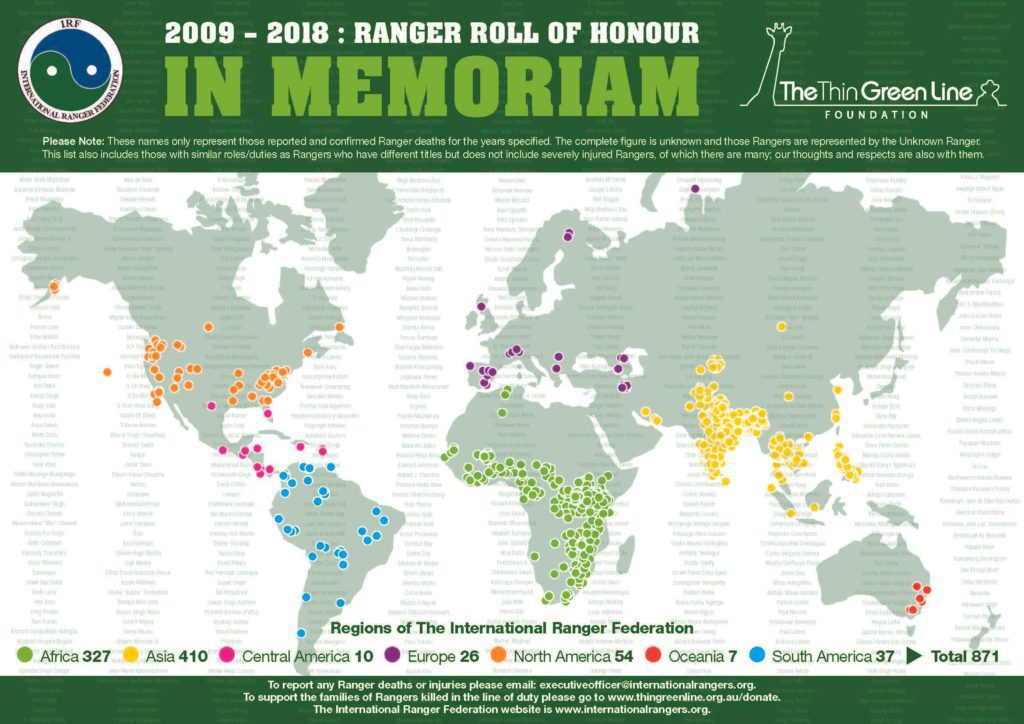
Join the event
Support this cause and help others to pause themselves for a moment and reflect!
- Host a local event: acknowledge the rangers work and make others learn about their great labour.
- Honour the Fallen Rangers: pause for a moment what you are doing, remember them and be thankful.
- Raise Funds: help Rangers around the world to get equipment and training and support the families of the fallen Rangers.
- Post on Social Media: Post pictures of yourself holding the World Ranger Day sign “I Stand with the Rangers” and show others what they are doing for everyone.
You can share your actions in the Facebook of the International Ranger Federation and The Thin Green Line Foundation.
And if you are a Park, there are many activities that you can organise such as small excursions, invite rangers from others Parks, talk with visitors and partners about the Ranger work, visit a School to engage young people with this work and award the Rangers that made a special contribution to Protected Areas.
We already did!
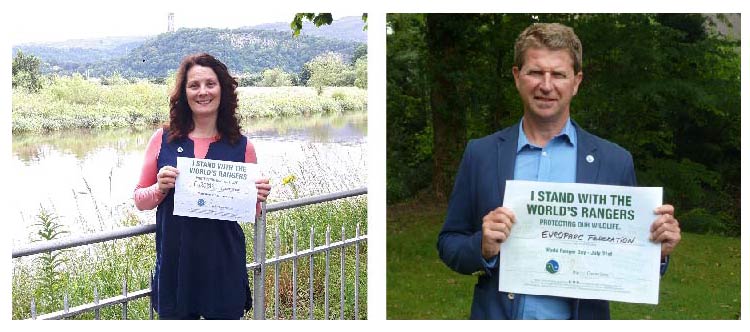
Left: Executive Director Carol Ritchie \ Right: EUROPARC President Ignace Schops
